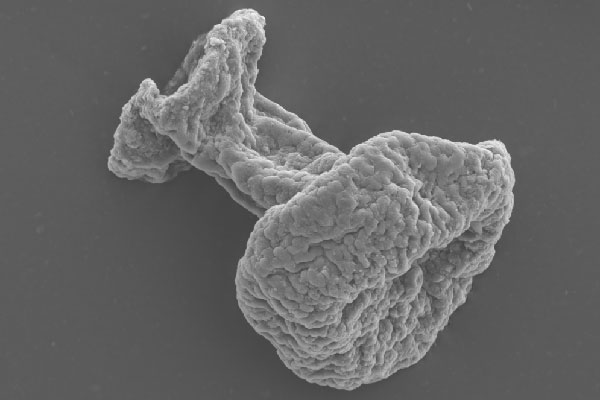Oldest Hairy Microbe Fossils Discovered

Ancient rock deposits, laid down between two massive ice ages, reveal the oldest known fossils for two types of single-celled creatures: Tube-shelled foraminifera and hairy, vase-shape ciliates.
Both closely resemble microbes living today. But the climate they lived in may have been quite different. The fossils appear in limestone deposited on the ocean floor between 635 million and 715 million years ago. This period was marked by two "Snowball Earth" events, when ice may have covered the entire planet.
These fossils date back more than 100 million years earlier than the oldest foraminifera and ciliates previously known. Even so, scientists think these organisms were around much longer, based on changes accumulated in their DNA since they split from close relatives. Some believe these types of single-celled creatures have been around for considerably more than 1 billion years, said Tanja Bosak, a study researcher and assistant professor of geobiology at the Massachusetts Institute for Technology.
"We can't claim we have seen something that is exactly like the modern species," Bosak said. "(But) here we have something that has looked very similar for 700 or more million years."
The fossils have evaded researchers not only because they are so tiny, but also because these deposits do not contain a type of rock that typically preserves fossils, particularly something this small and fragile, she said. [Stunning Photos of the Very Small]
Fossils belonging to foraminifera were found in rocks from Namibia, while ciliates were found in rocks from Mongolia. Both types first appear in layers of rock called cap carbonates, laid down as the world was leaving the earlier snowball state, which occurred 716 million years ago.
Foraminifera, ancient and modern, build protective shells by picking up tiny grains of mineral that they stick to their exterior using a sugary compound. They aren't the only shelled organisms Bosak and her colleagues found. They also discovered amoebas that appeared to be building the same sort of shells.
Get the world’s most fascinating discoveries delivered straight to your inbox.
While this wasn't the first fossil evidence for these amoebas, the nature of their resistant covering was ambiguous in the earlier fossils. The most recent fossils are the first amoebas to show evidence of primitive shell building, Bosak said.
Ciliates, meanwhile, are covered with tiny hairs called cilia. And the fossils found closely resemble modern, planktonic organisms called tintinnids.
Life at the time was quite simple, but it soon became more complex. For instance, the first animal embryos show up after the end of the latest Snowball Earth event, around 635 million years ago.
It's possible the arrival of abundant microbes, particularly the ciliates, may have had some hand in the change, by helping to bump up the amount of oxygen in the atmosphere.
Even after free oxygen dramatically increased in the atmosphere, a change called the Great Oxidation Event, the oxygen level was much lower than it is today. The ciliates lived in the surface waters, then died and sank, taking organic carbon with them and tucking it away in sediments low in oxygen where the organisms would decompose only slowly. The burial of this carbon meant it could not be converted to carbon dioxide by respiration. As a result, oxygen produced by the photosynthesis of other microbes like algae would have built up.
The discovery of these organisms reveals a possible mechanism by which the oxygen levels in the atmosphere increased, allowing life to become more complex, she said.
The research has been published in articles published online in October and November in the journal Geology, and online in June in the journal Earth and Planetary Science Letters.
You can follow LiveScience senior writer Wynne Parry on Twitter @Wynne_Parry. Follow LiveScience for the latest in science news and discoveries on Twitter @livescience and on Facebook.
 Live Science Plus
Live Science Plus







